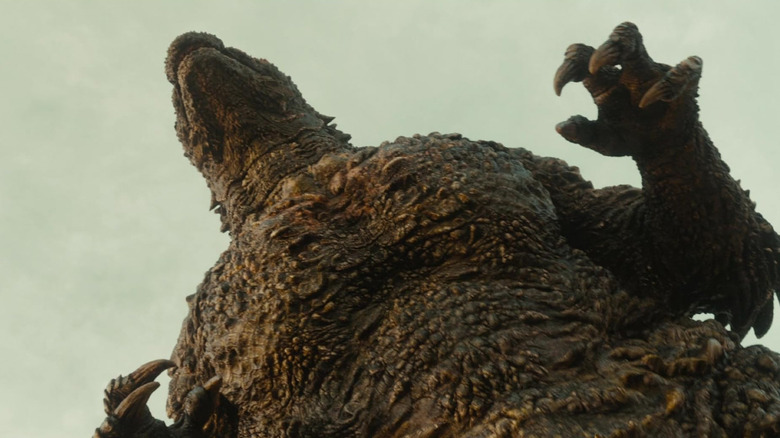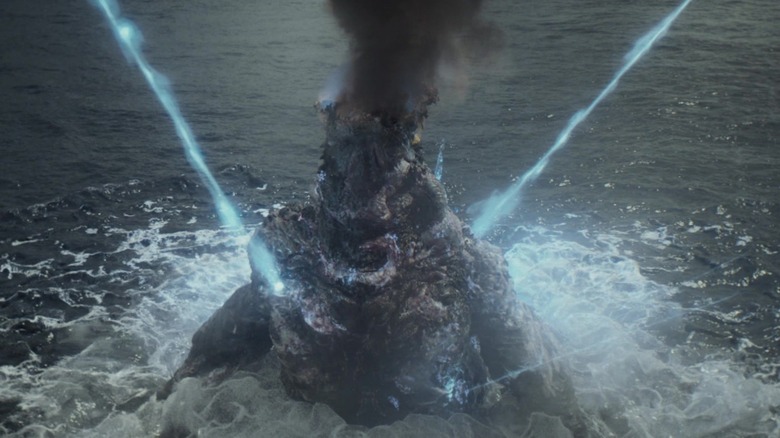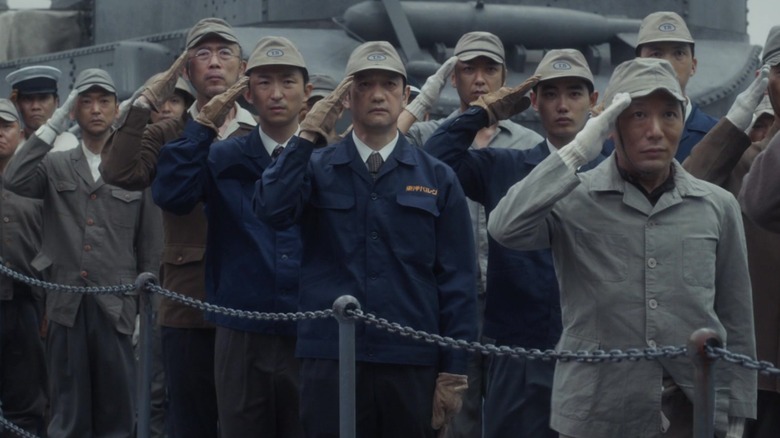Godzilla Minus One Used A Surprisingly Small Amount Of VFX
This post contains spoilers for "Godzilla Minus One."
When "Godzilla Minus One" hit theaters late last year, it was a fierce reminder that visual effects can actually be amazing. These days, conversations about CGI mostly gravitate towards its continual overuse, the shoddiness of some digital effects work in recent blockbusters, and the reportedly relentless workload impacting exhausted effects artists. Yet, Toho Studios' latest kaiju flick is a minor cinematic miracle, a low-budget movie that doesn't overuse CGI while still managing to show off its central beastie plenty of times. For its achievements, the movie was awarded the Oscar for Best Visual Effects, the first the "Godzilla" franchise has earned in its 70 year history.
Surprisingly, despite the accolades the film received for its visuals, "Godzilla Minus One" doesn't actually utilize that much digital art compared to most of its contemporaries. In a Variety spotlight piece earlier this year, the film's director, writer, and visual effects supervisor Takashi Yamazaki confessed that it took just 610 VFX shots to make the film's spiky-backed monster come to life. For comparison, a recent Legendary Godzilla film, 2019's "Godzilla: King of the Monsters," used 1,535 different VFX shots according to an interview that effects supervisor Guillaume Rocheron gave Post Magazine.
Godzilla Minus One used half as many VFX shots as Barbie
The VFX shot count for "Godzilla Minus One" isn't just pared down compared to other Godzilla films, but compared to pretty much any modern genre blockbuster. "Kingdom of the Planet of the Apes" reportedly used 1500 visual effects shots to render its primate-filled world, while the "Madame Web" effects team told Art of VFX that the Sony superhero flick had "over 1,100 shots" featuring digital elements. It's not just major action-adventure franchises that are effects-happy these days, either; according to Animation World Network, 2023's candy-colored mega hit comedy "Barbie" featured 1,300 shots with digital elements. That's more than twice as many VFX shots as "Godzilla Minus One."
The reason for the major disparity here is simple: budget. While most VFX-heavy American films have budgets in the hundreds of millions, "Godzilla Minus One" more than made do with a budget under $15 million. Most success stories written about the film cite its small budget and major box office returns, but the effects look so impressive that without being told, viewers may not realize how few there are. According to Yamazaki, the vast majority of the VFX shots were employed during the climax, with special attention paid to the moment in which the otherworldly monster crumbles to pieces and returns to the sea. It's an impressive sequence that features a memorable visual: the monster's atomic power, previously only shown via a heat ray blast traveling up its spine to its mouth, begins to shine through in startling blue beams of light as Godzilla breaks apart.
Godzilla Minus One's climax was designed to be an 'almost religious moment'
"That moment was probably the one we discussed the most and had a hard time landing it," Yamazaki told Variety. A team of roughly three dozen effects artists worked on the scene. "We wanted to make it a sacred, almost religious moment, where you see the light rays and imagine what this moment would be like," the filmmaker explained. He continued: "There was this photo-realism happening but also this ceremony, and we needed them to integrate those feelings." The effects team reportedly brainstormed 100 different approaches to the sequence before cracking it, settling on the final version, which saw the monster meet his end like a statue of an ancient deity falling down to Earth.
The "Godzilla Minus One" visuals would be great no matter their cost and number, but the utility with which they're employed makes the movie an even more impressive feat. Even more remarkable is the fact that there's no sense of absence or withheld visuals to the movie; it shows off its fearsome monster far more than plenty of low-budget kaiju movies of decades past, and its deeply human story deserves every dollar the film earned. Now, about that sequel...


